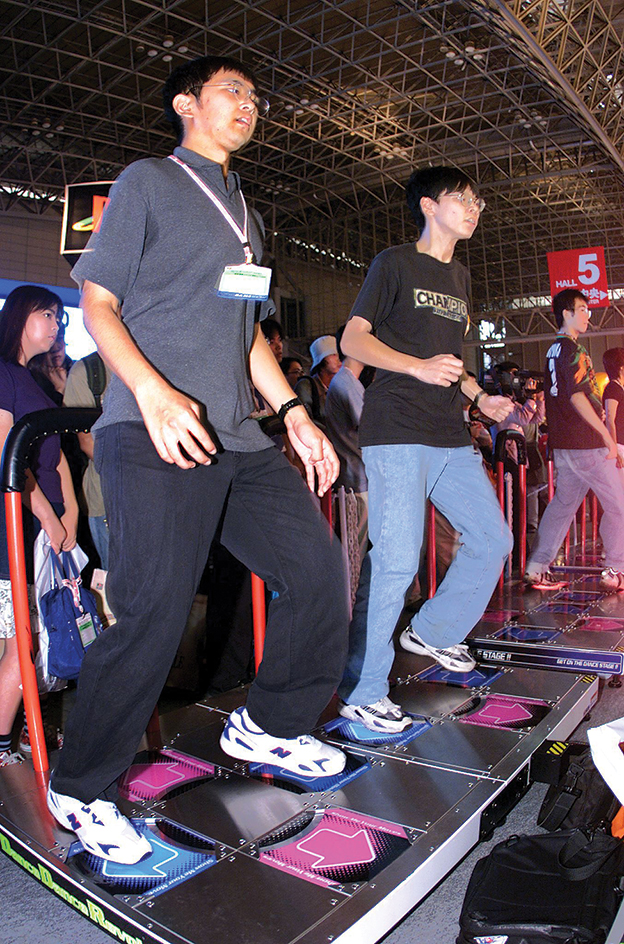Arcade game is a game built for play in an amusement arcade or other public place. Amusement arcades are businesses offering a variety of games and other diversions. Arcades peaked in popularity in the 1970’s and 1980’s. Traditional arcade games were coin-operated or token-operated. Modern versions may accept bills or swipe cards.
Most modern arcade games are electronic games. Such an arcade game generally includes a dedicated computer (computer designed to run a single program) along with a large viewing screen, simple controls such as buttons or joysticks, and payment slots. These components are generally housed in a large, free-standing wooden cabinet decorated to advertise the game. 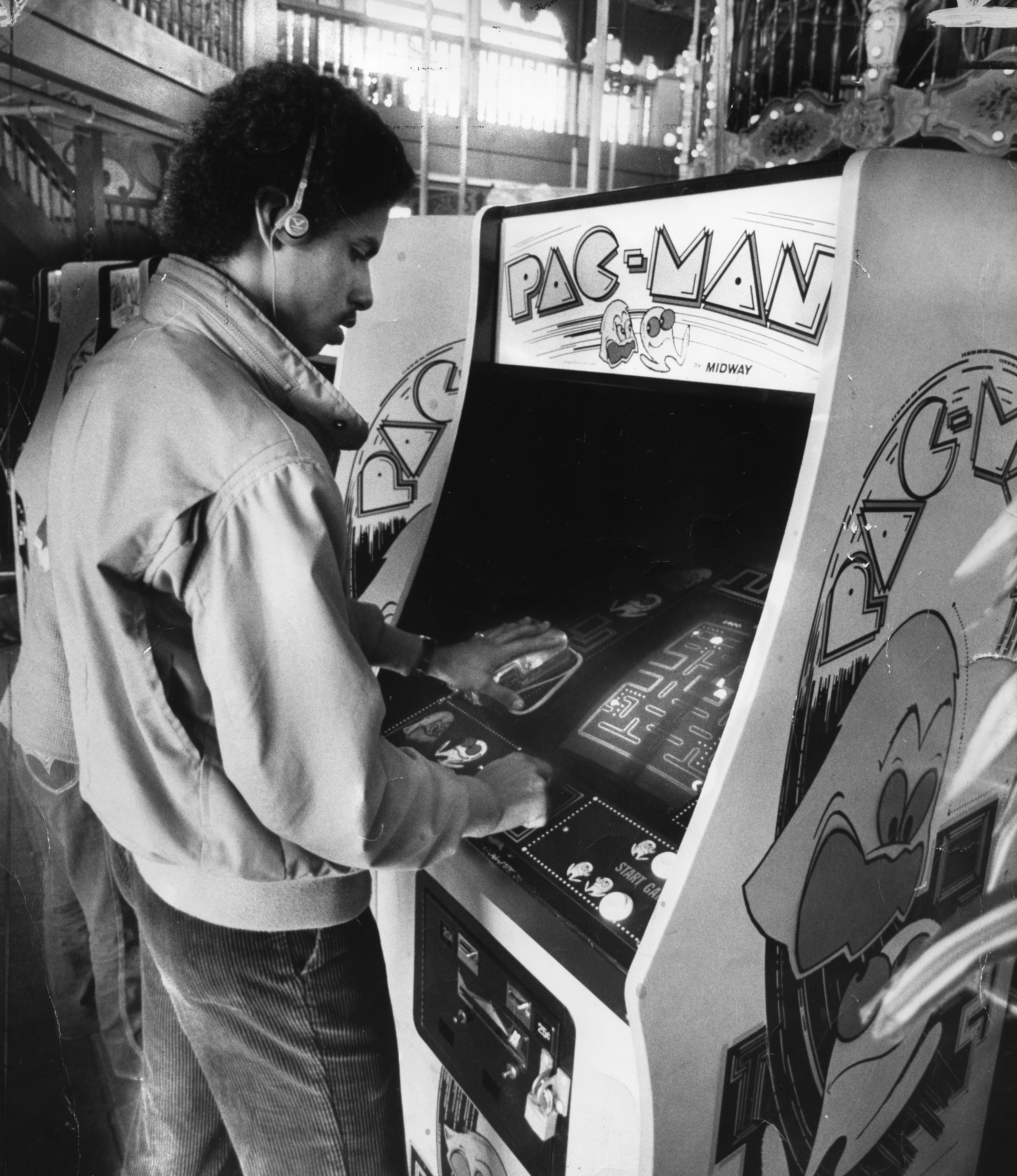
Kinds.
Some arcade games award prizes. Merchandizers, such as the claw machine, distribute prizes directly to winners. In redemption games, players win tickets or credits that they may redeem (exchange) for prizes. In other arcade games, the goal is simply to play as long as possible or to accumulate the most points. Such a game may include a leaderboard that preserves top players’ scores. Several organizations verify and record the highest scores of the most popular arcade games. 
Some arcade games can accommodate more than one player at the same time. Some such games are cooperative, or co-op, in which players work together to achieve the same goal. Others, such as racing games and fighting games, may pit players against one another.
Development.
Arcade games were developed in the early 1900’s as attractions to fill amusement arcades. Skee-Ball, one of the first arcade games, was invented in 1909. Skee-Ball is a game in which players roll a ball down a lane and up a ramp, trying to land the ball in target rings. The first coin-operated arcade games were pinball machines, which became popular in the 1930’s. The earliest pinball games lacked player-controlled flippers to strike the ball. This innovation debuted in 1947. Companies developed electromechanical arcade games in the mid-1900’s. Such games used electric switches and relays to manipulate physical objects within the cabinet, simulating driving, sports, or other activities. Despite losing ground to later electronic arcade games, Skee-Ball lanes and pinball machines remain popular today. 
In 1961, programmers at the Massachusetts Institute of Technology (MIT) developed a simple electronic game for the newly invented minicomputer. Minicomputers were smaller and cheaper than mainframe computers but still capable of running complex programs. In the game, called Spacewar!, two players each piloted a small spaceship around the screen, shooting torpedoes at each other. The game was never formally patented or sold, but the program used to run it was passed around among colleges across the country. In 1971, two college students, Bill Pitts and Hugh Tuck, installed a coin-operated version of the game in the student union at Stanford University. They called this electronic arcade game Galaxy Game. 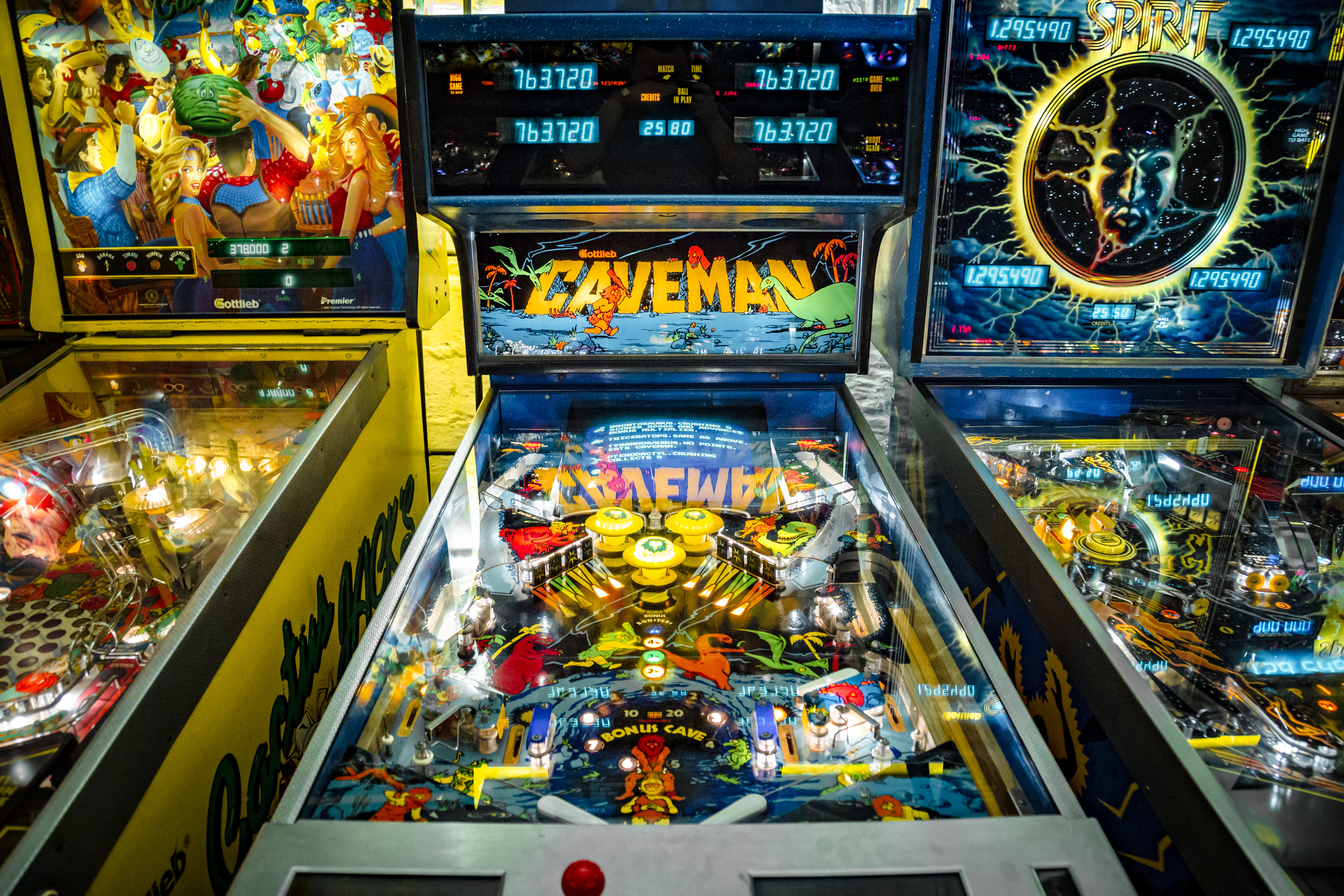
Around the same time, the American entrepreneur (business developer) Nolan Bushnell attempted a wider release of a Spacewar!-inspired arcade game called Computer Space. Computer Space was a commercial failure. Bushnell later started the electronic game company Atari. Atari had a hit with its arcade game Pong, released in 1972. Pong was a simple game based on table tennis, also known as ping-pong. It enabled players to hit a ball back and forth between on-screen “paddles,” which they controlled using buttons or joysticks.
The success of Pong inspired many entrepreneurs and software developers to enter the arcade game business. The number of arcade games expanded rapidly over the next 10 years. In 1975, the amusement company Midway released the arcade game Gun Fight. The game was originally developed for the Japanese market by Tomohiro Nishikado, under the title Western Gun. Gun Fight was one of the first arcade games to use a microprocessor. The microprocessor is the device that performs computing operations in a modern computer. The microprocessor was smaller than existing equipment and could perform operations more quickly, enabling more complex arcade games to be produced. Nishikado took advantage of these capabilities to develop Space Invaders (1978), in which players combat an advancing army of aliens. Space Invaders was an international hit, sparking a golden age of arcade games. 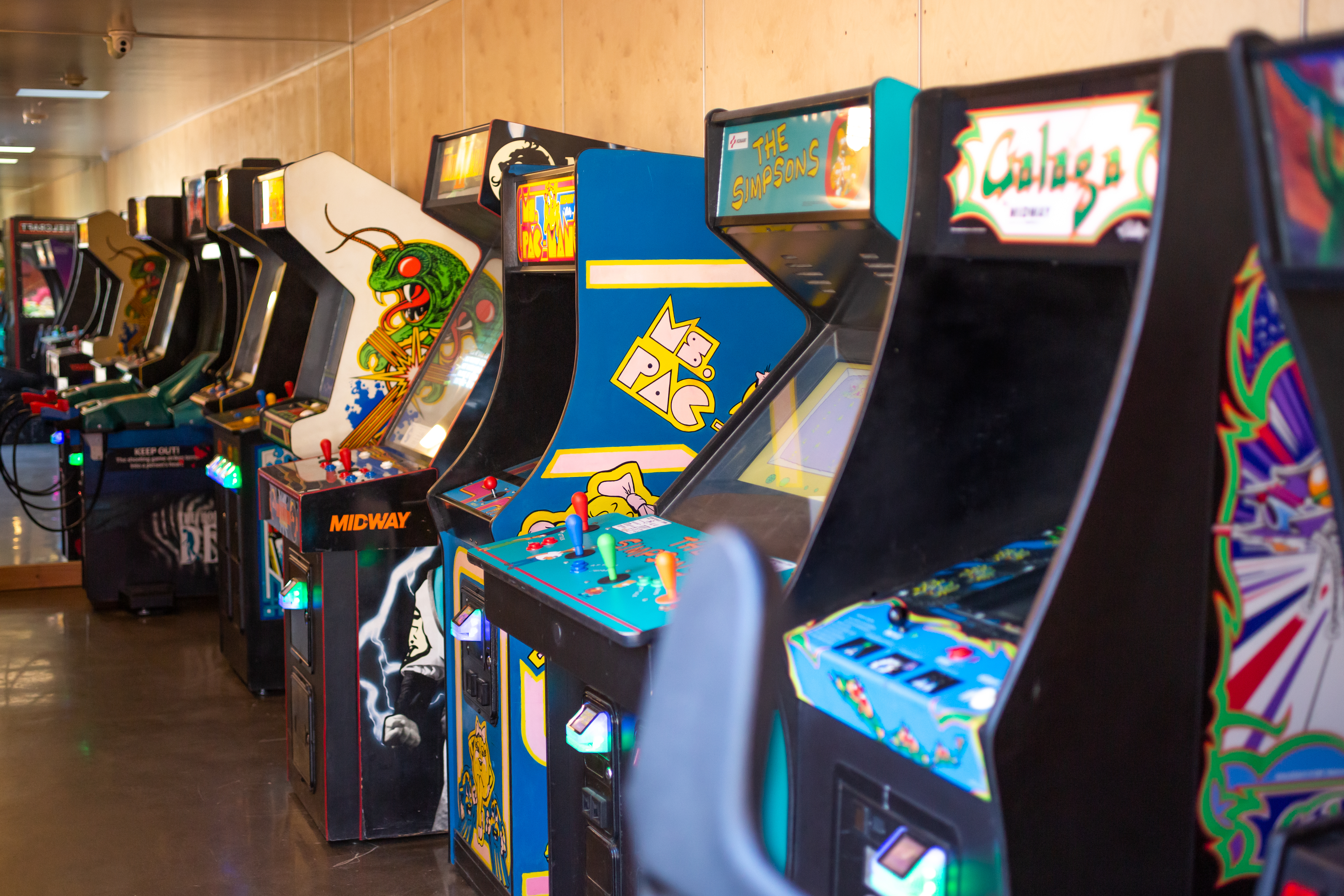
Early arcade games made use of simple, black-and-white graphics (visual elements). By 1980, games had begun to include color and more detailed imagery. The most popular game at the time was Pac-Man. In Pac-Man, the player moves the title character around a maze, eating glowing dots and dodging colorful ghosts. Hundreds of thousands of Pac-Man arcade machines were sold in the game’s first 1 1/2 years on the market. The game crossed over into pop culture fame. It inspired officially licensed merchandise and a pop song, “Pac-Man Fever” (1982) by the group Buckner & Garcia. Pac-Man appealed to players with its bright visuals and easy-to-learn yet challenging gameplay. 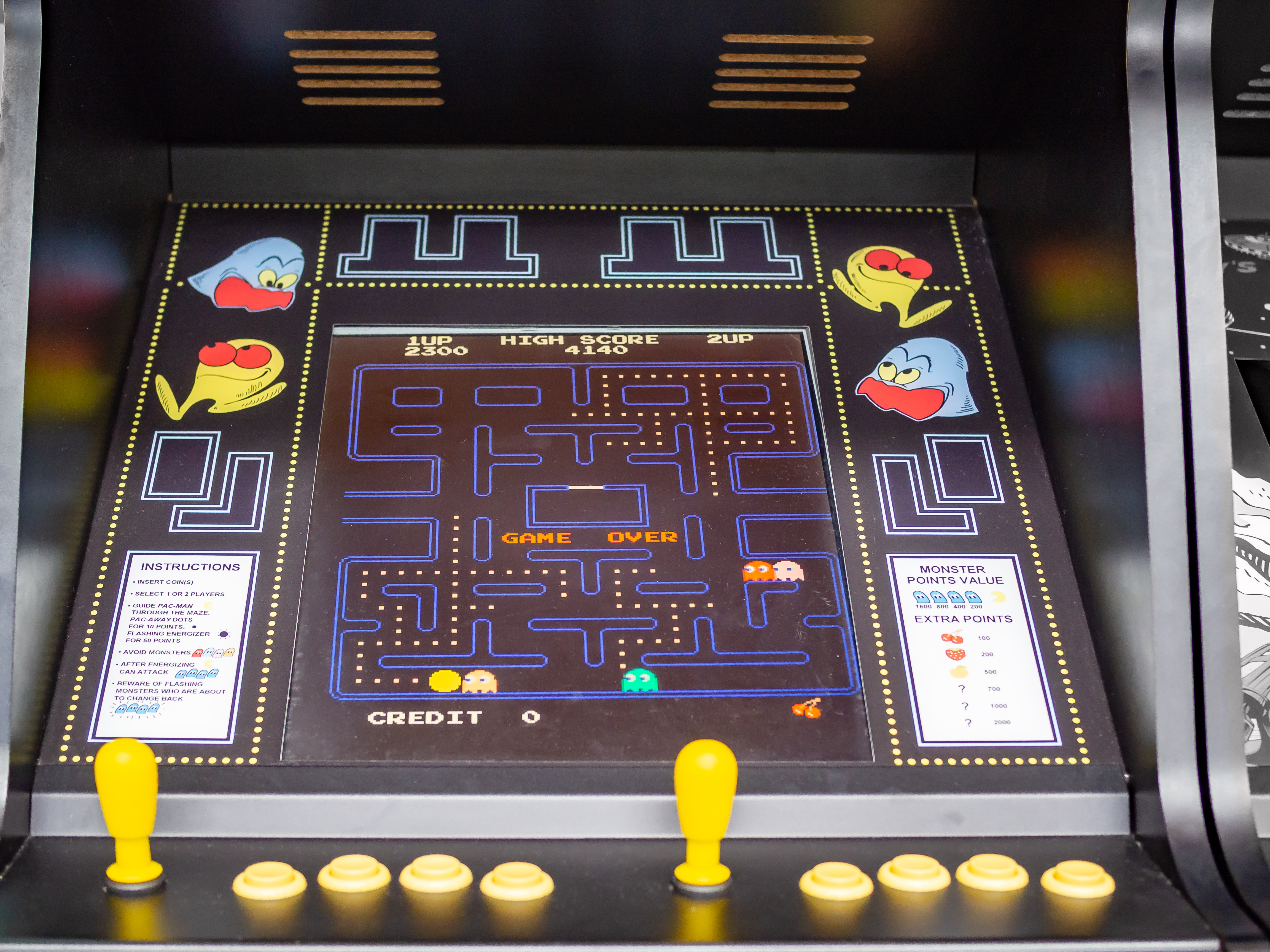
Controversy and decline.
As arcades and arcade games rapidly expanded in popularity, they attracted controversy. Some parents, school faculty, and lawmakers complained that arcade games were a waste of money and that arcades encouraged truancy (skipping school) among children and teenagers. Some claimed that arcades provided havens for drug abuse and other forms of delinquency. Some local authorities and activists pushed to shutter arcades. 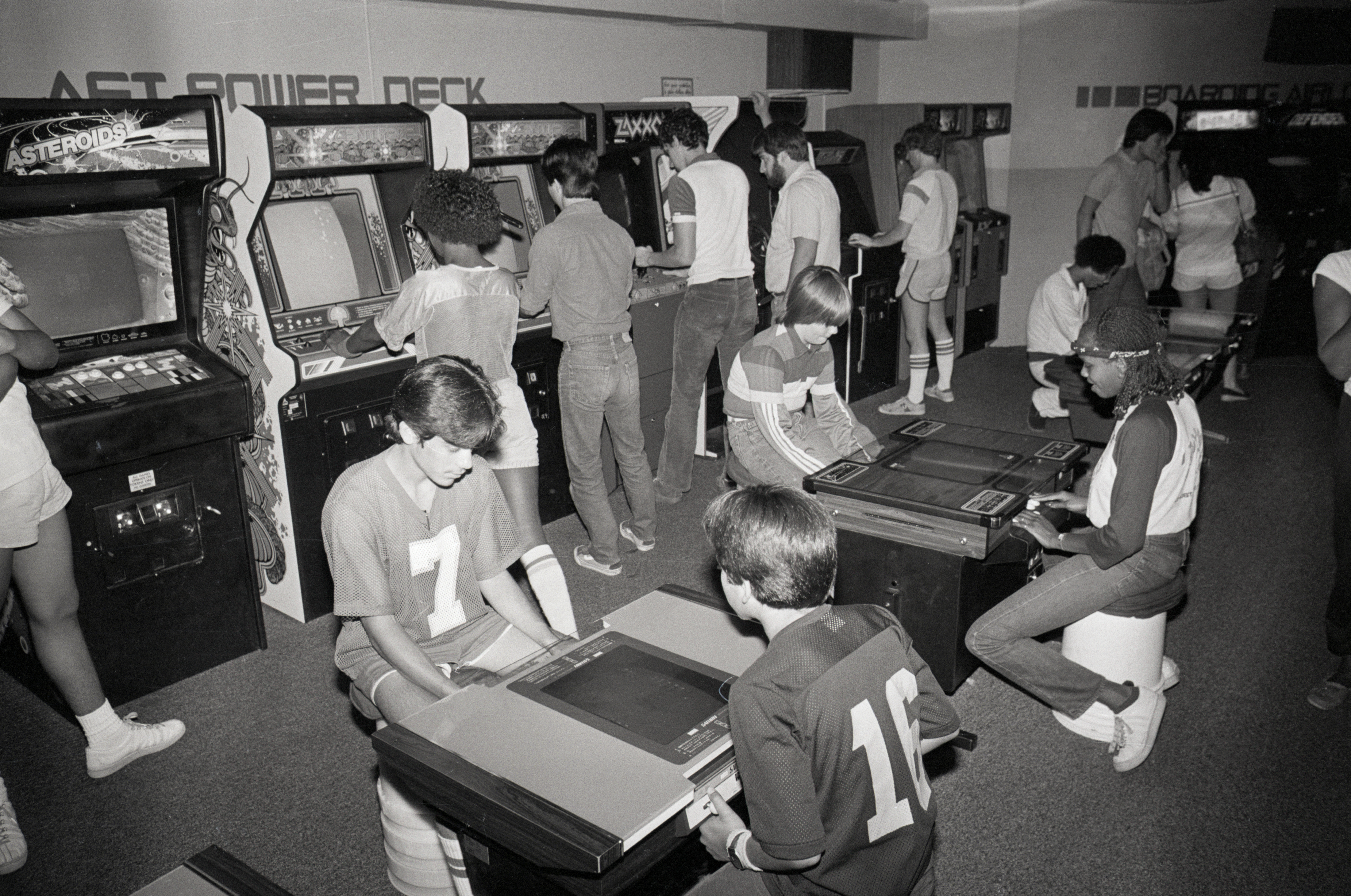
As graphics improved, some arcade games began to show more violent content. Death Race (1976) was the first video game to raise widespread fears that games might desensitize children to violence. In Death Race, the player scored points by running over humanoid figures with a car. The occult theme and violent gameplay attracted much negative media attention. But the attention led more arcades to buy the game.
Arcade game developers struggled to achieve long-term success. Experienced gamers wanted more challenging games. But if a game was too difficult, it would turn away casual players. Both kinds of players wanted new games frequently. To keep up with demand, game developers sometimes produced low-quality games. Many entrepreneurs had rushed into the industry, lured by the success of Space Invaders and Pac-Man. By the early 1980’s, the arcade industry was experiencing a bubble. A bubble is a rapid economic expansion that is not stable or sustainable.
In 1983, the electronic game industry in North America entered a major slump that lasted for several years. The market had become flooded with low-quality games, and people began to regard electronic games as a passing fad. Many arcades closed.
When the market began to rebound in the mid-1980’s, attention shifted to home video game consoles. The improved graphics, storylines, and characters offered by new consoles made home gaming more exciting than arcade games. Bringing video games into the home also offered parents more control over the games their children played.
Modern arcade games.
Arcades remain popular entertainment destinations in Japan. Despite the decline of arcades elsewhere, players continue to enjoy arcade games at other locations. One such location is the entertainment restaurant. In addition to founding Atari, for example, Bushnell founded the restaurant chain Chuck E. Cheese’s Pizza Time Theater in 1977, as a way to secure locations for his arcade games. The combination children’s arcade and pizza restaurant also featured a stage show with animatronic (mechanical) animals. David Corriveau and James “Buster” Corley founded the entertainment restaurant chain Dave & Buster’s in Dallas, Texas, in 1982. Their concept targeted adults but offered arcade games and other entertainment. Bars featuring arcade games also became popular in many cities. Bowling alleys, resort hotels, and movie theaters may include arcade rooms. 
Some people continue to play arcade games because they can offer more immersive experiences than can be easily had at home. Immersive games provide the sensation of being embedded in, surrounded by, or in the midst of the game. A racing arcade game, for example, might feature a windshield-sized screen, controls designed to mimic those found in a race car, and haptic (touch-based) feedback that makes the seat rumble. Specialized arcade games may include a ground platform mounted with buttons that players press with their feet. Some virtual reality (VR) games require a complex setup and open space, making them more suitable to an arcade environment. 
Game enthusiasts have shown considerable interest in preserving and studying arcade games. The Strong National Museum of Play in Rochester, New York, for example, is home to the International Center for the History of Electronic Games (ICHEG). ICHEG holds tens of thousands of items related to the history of electronic gaming, including arcade games. Other enthusiasts operate small museums or replica arcades to capture the feel of classic arcade gaming. 